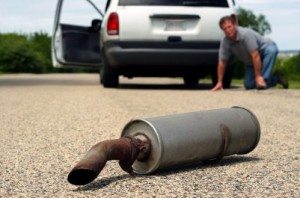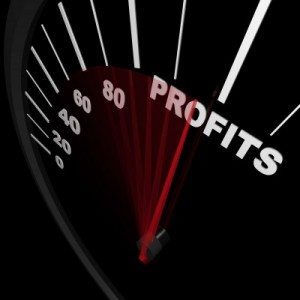Between all the car repairs, oil changes and little accessories adorned inside and out, there comes a time when any driver will eventually part ways with their vehicle for a newer, shinier toy. I did it to my old Honda Accord for a newer, bigger and slicker Camry. Part of it was because I had an old ’89 Accord with around 99,000 miles to its name when I purchased it back at the tail-end of high school that served its purpose: it was a fantastic city car…but on the highway, not so much. And to be quite honest, it was very reliable for the entire 8-year-span I owned it. There was only one major car repair needed (I don’t count air filter changes or headlights) and that was a new transmission. Sure, there was a slight tear in the oil pipe somewhere towards the twilight years, but as far as major fixes went, it wasn’t half bad.
And that’s because I took care of it day in and day out. I always had the oil changed a little under the “every 3,000 mile” range. I put an emphasis on monitoring tire tread wear and/or how much tightly pressurized they were. I tried my hardest to monitor the little things to prevent the bigger issues. And with all the TLC afforded to the car, even with 120,000+ miles to its name, I was able to get around $1,500 trade-in for it. Not bad considering the model year and mileage (although I’m sure those figures would be much lower today because of depreciation).
And with that sort-of-long-winded intro about car depreciation and added value, I’d like to give a few pointers for every driver out there, regardless of which car they drive, on how best to increase your car’s worth when the final bell comes ringing.
Do Your Homework
The first order of business when mulling over your car’s worth is by weighing expert opinions on not just your make and model, but how it fares against competitors in its class. Referencing the likes of Kelley’s Blue Book (KBB) and Consumer Reports would be a great starting point. KBB has been doling out car values and reviews for almost 100 years and has been one of many go-to resources for drivers when negotiating their car’s worth at the trade-in tables.
CARFAX Should Be Your Ally
One of the best innovations to not just car values, but the buying/selling of cars in general, CARFAX history reports have helped assuage both car buyers who feel they’ve been misled and the dealerships for having a little more authority with their Certified Pre-Owned lineups. CARFAX reports are able to unearth records of any accidents, owner history, whether or not the mileage has been toyed with, flood or hail damage and much more. And as long as your actions and/or circumstances fall under one of these categories, this report can go a long way for the buyer or trade-in salesperson to consider when making their pitch to you.
Be Passionate In Protecting Your Car
An obvious no-brainer here. How would you expect to retain your car’s ultimate asking price if you neglect key areas both inside and out? You’d be setting yourself up for a low-ball offer that’s far under the average trade-in value of the vehicle. That’s why you must be proactive with the little things such as washing your car, having the underbelly sprayed down to keep any hint of metal corrosion under wraps, inspecting for any scratches or paint chips (especially around vital areas that protect the metal framework), determining if there are any hitches in the bumpers, etc. And for the much larger issues, rely on your senses when driving by listening for any irregularities such as screeching brakes, over-worked timing belts and clogged up mufflers. Feel the steering wheel and sense if it feels rougher than usual or if the drive itself seems to be more plodding than streamlined.
And while it’s nearly impossible to avoid encountering an accident or fender bender along the way, be as safe and attentive a driver as possible.
And that last point rings truer among many of the other issues. Obviously avoiding an accident can retain the highest possible ROI come trading time, but the more alert and defensive your driving is, the less stress you put on your car’s working parts at the same time. And in turn, those actions can help the life of your engine and other critical (and costly) areas, saving you money in the end.
Author Bio: Kyle has consulted for a local Camaro dealer in KC and has covered a broad range of topics on the automotive industry, including vehicle overviews like the Camaro, but mainly deals with car repair tips, driver safety and tips on maximizing the selling and buying of a car.


 admin says
admin says
July 13, 2012 at 7:01 pmGreat post Kyle, thanks for posting!
 Eric P says
Eric P says
July 16, 2012 at 11:18 pmKBB and NADA are guides and not gospel. Real market trends are a better indicator of what vehicles are worth. If you plan on valuing your vehicle with a KBB type guide consider if you will also buy a sellers vehicle for KBB pricing too! It’s only a guide.
CarFax is a very good tool when conisdering a purchase or selling your vehicle. Keep in mind CarFax is a reporting tool. So if you try to sell your vehicle and have done the work yourself and show no service records from a licensed and reporting service shop it will devalue your vehicle compared to someone who has plenty of service records to show.
And unfortunately, any dealer that has to buy or sell a vehicle with an accident reported on CarFax will hold it against you. Just as you would when considering a purchase.
 Lasandra Zaverl says
Lasandra Zaverl says
November 23, 2013 at 11:42 amIt’s great that you are getting thoughts from this article as well as from our argument made
at this place.